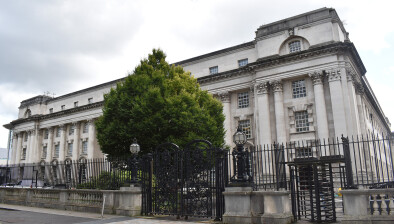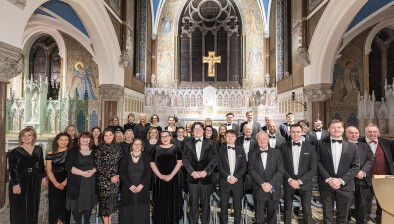NI: Gross and inordinate delay in the inquest into 1992 RUC killing made it impossible for Coroner to reach conclusions
Sitting as a Coroner at the inquest into the death of a 22-year-old man in 1992, Mr Justice Horner said it was impossible with the passage to time to say with any certainty what happened.

About this case:
- Judgment:
In his judgment, the Coroner criticised the PSNI for creating obstacles and difficulties that prevented progress in the inquest, and ultimately found that neither side were able to convince him of what they said had occurred immediately prior to the deceased’s death.
Background
22-year-old Patrick Pearse Jordan was shot and fatally wounded by a member of the RUC on the Falls Road, Belfast on 25 November 1992.
The original inquest into the death of Pearse Jordan commenced on 4 January 1995 but was adjourned part heard. At the end of 2012, the High Court and the Court of Appeal set a further inquest aside.
The inquiry into the death of Pearse Jordan has been the subject of 24 judicial reviews, 14 appeals to the Court of Appeal, two hearings in the House of Lords, and one hearing before the European Court of Human Rights.
The scope of the inquest had previously been agreed between the parties and focussed on factual questions about the shooting, the debrief that followed the shooting, and the planning and control of the operation.
Representations made by the parties
The primary representation made on behalf of Pearse Jordan’s next of kin was that he was shot in the back at close range by “Sergeant A” without cause or justification when he was fleeing the Orion and that he presented no threat to any policeman or anyone else at the scene.
The case made by the police, however, was that the deceased’s decision to “do a runner” was compelling evidence that he was driving a car with either a bomb or munitions on board and it was likely that he was armed.
Conducting an Article 2 compliant inquest
Article 2 of the European Convention on Human Rights permits the State to use force in the prevention of crime or to affect a lawful arrest where it is absolutely necessary. The State authorities must plan the operation and put in place controls to minimise the need to resort to lethal force. In addition, the State investigating a death that is a consequence of actions by State agents must do so with “due expedition”.
The Coroner said the task for this inquest, conducting an Article 2 compliant inquest, must be to ask whether Sergeant A was acting in self-defence, that is “whether Sergeant A had an honest and genuine belief that it was necessary for him to open fire”.
In quashing the 2012 inquest verdict, it had been stated in the High Court “the PSNI have both created obstacles and difficulties which have prevented progress in the inquest and have also not reacted appropriately to other obstacles and difficulties”. Noting this, the Coroner indicated “the passing of time … makes the task of the fact finder more difficult. Consequently, the State, by delaying these investigations has placed itself at an inevitable disadvantage in trying to satisfy the Article 2 burden of proof.”
Discussion and Findings
The Coroner found that the objective, empirical evidence proved beyond doubt that Pearse Jordan was shot in the back by “Sergeant A” firing a burst of five rounds of automatic gunfire. However, “the circumstances in which those rounds were discharged are highly contentious and the difficult task of determining what actually occurred has been made nearly impossible by the delay of nearly 25 years which has undoubtedly dimmed memories and shaped the recollections of those who were involved”.
After considering the evidence of civilian witnesses, expert evidence, police officers, and the next of kin, the Coroner’s findings were summarised as: “The deceased was shot and fatally wounded on 25 November 1992 on the Falls Road. At the time of his death he was on a mission for PIRA. He was unarmed. The Ford Orion he was driving had been used earlier that day to carry substances used in the making of improvised explosives, namely ammonium nitrate and sugar. At the time of the shooting the Orion car was not being used to ferry guns, explosives or other munitions.”
He then added: “It is now impossible with the passage of time to say with any certainty what happened on that fateful afternoon. At the remove of a quarter of a century I am simply unable to reach a concluded view which is fair and just as to whether the use of lethal force was justified or not. I remain profoundly unsure as to what happened. Neither side, for the reasons I have set out, have been able to convince me that what they say did occur immediately prior to the deceased’s death. On the balance of probabilities if the events did happen as the PSNI contend, and as I have said I have been unable to determine that issue on the balance of probabilities, I am satisfied that Sergeant A acted in self-defence and that there was no breach of Article 2. However, in so far as the onus lies on the PSNI to provide a satisfactory and convincing explanation to the inquest for the use of lethal force it has failed to do so. But how precisely the deceased met his death on that fateful afternoon has not been proved to the satisfaction of this inquest and remains unknown.”
After addressing a number of agreed questions in turn, the Coroner made seven recommendations – noting that with the passage of time some would now be redundant.
According to the Coroner, the gross and inordinate delay in Pearse Jordan’s inquest made it almost impossible to reach any conclusion on the balance of probabilities as to what happened on 25 November 1992, and that this was a “most unsatisfactory outcome” for all parties involved.








